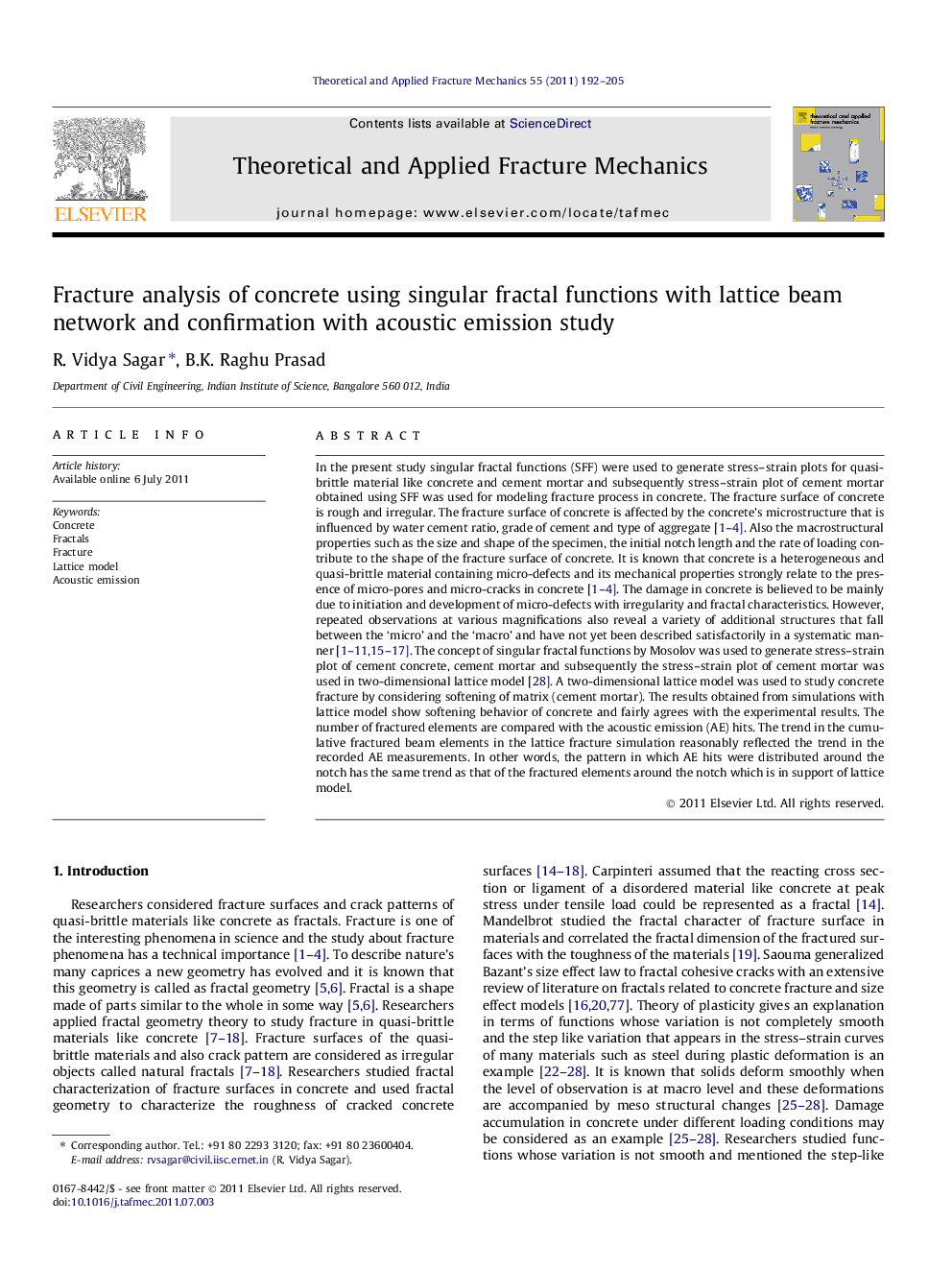| کد مقاله | کد نشریه | سال انتشار | مقاله انگلیسی | نسخه تمام متن |
|---|---|---|---|---|
| 807206 | 905480 | 2011 | 14 صفحه PDF | دانلود رایگان |

In the present study singular fractal functions (SFF) were used to generate stress–strain plots for quasi-brittle material like concrete and cement mortar and subsequently stress–strain plot of cement mortar obtained using SFF was used for modeling fracture process in concrete. The fracture surface of concrete is rough and irregular. The fracture surface of concrete is affected by the concrete’s microstructure that is influenced by water cement ratio, grade of cement and type of aggregate [1], [2], [3] and [4]. Also the macrostructural properties such as the size and shape of the specimen, the initial notch length and the rate of loading contribute to the shape of the fracture surface of concrete. It is known that concrete is a heterogeneous and quasi-brittle material containing micro-defects and its mechanical properties strongly relate to the presence of micro-pores and micro-cracks in concrete [1], [2], [3] and [4]. The damage in concrete is believed to be mainly due to initiation and development of micro-defects with irregularity and fractal characteristics. However, repeated observations at various magnifications also reveal a variety of additional structures that fall between the ‘micro’ and the ‘macro’ and have not yet been described satisfactorily in a systematic manner [1], [2], [3], [4], [5], [6], [7], [8], [9], [10], [11], [15], [16] and [17]. The concept of singular fractal functions by Mosolov was used to generate stress–strain plot of cement concrete, cement mortar and subsequently the stress–strain plot of cement mortar was used in two-dimensional lattice model [28]. A two-dimensional lattice model was used to study concrete fracture by considering softening of matrix (cement mortar). The results obtained from simulations with lattice model show softening behavior of concrete and fairly agrees with the experimental results. The number of fractured elements are compared with the acoustic emission (AE) hits. The trend in the cumulative fractured beam elements in the lattice fracture simulation reasonably reflected the trend in the recorded AE measurements. In other words, the pattern in which AE hits were distributed around the notch has the same trend as that of the fractured elements around the notch which is in support of lattice model.
► The concept of singular fractal functions was used to generate stress-strain plot of cement concrete, cement mortar.
► Subsequently the stress-strain plot of cement mortar was used in two dimensional lattice model.
► A two dimensional lattice model was used to study concrete fracture by considering softening of matrix.
► The trend in the cumulative elements in the lattice model reasonably reflected the trend in the recorded AE measurements.
Journal: Theoretical and Applied Fracture Mechanics - Volume 55, Issue 3, June 2011, Pages 192–205